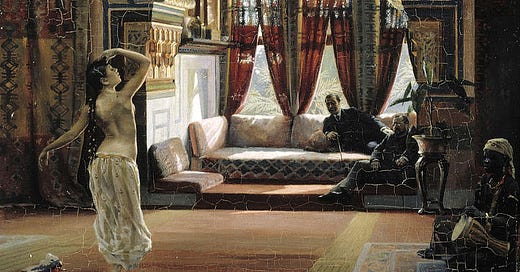“She has a genius,” distinguished Simon Iff. Her dancing is a species of angelic possession.”
- “Moonchild”, Aleister Crowley
“The Wisdom of the Dance” is another series of articles (besides the series on archetypes) that shall continue throughout weeks. This particular one will seek to extract wisdom and principles behind various dance forms and show how you can use that wisdom to improve your life, relationships and general wellbeing. Perhaps, if you never danced, it will make you fall in love with one of the dance forms that shall be presented here. The articles will be based on my experience & knowledge of these dances, and not merely on a cold analysis.
Dancing is a physical activity that invites a person to come inside their body. It comes as no surprise to any of us that in our minds, Mars is connected to both combat and dance. His cult even had the dancing priests called Salci. We intuitively associate these two because of the physical intensity both can produce. For long they were not entirely separate either — many of the most primitive dance forms started as war dances or as a form of ritual before the battle. Even belly dancing has one such — the saidi style or saidi dance, coming from the South of Egypt, was first danced by men. An important component of a Saidi dance is the stick — the stick dance was part of the training for combat. The woman’s version is more celebratory and is a part of weddings and other celebrations, but it, too, includes a stick — a female dancer is moving it around and playing with it. In more modern times, fit for stage and cinema, men and women would dance together as a form of flirtatious “combat”, teasing and playfully arguing (You can see the modern, stage example here).
Even when the dance finds its root in ritual and ceremony rather than combat, the principle still remains — the combat is simply invited inwards and rather than creating an explosion, it creates an implosion. Our body, normally full of noise, comes “possessed” by the purity of rhythm and melody, the defences and assumptions around self are destroyed. The nigredo (black) of humiliation, shame and stagnation transforms into rubedo (red) of life, ecstasy and intoxicated enlightenment.
Keep reading with a 7-day free trial
Subscribe to Volupta to keep reading this post and get 7 days of free access to the full post archives.





